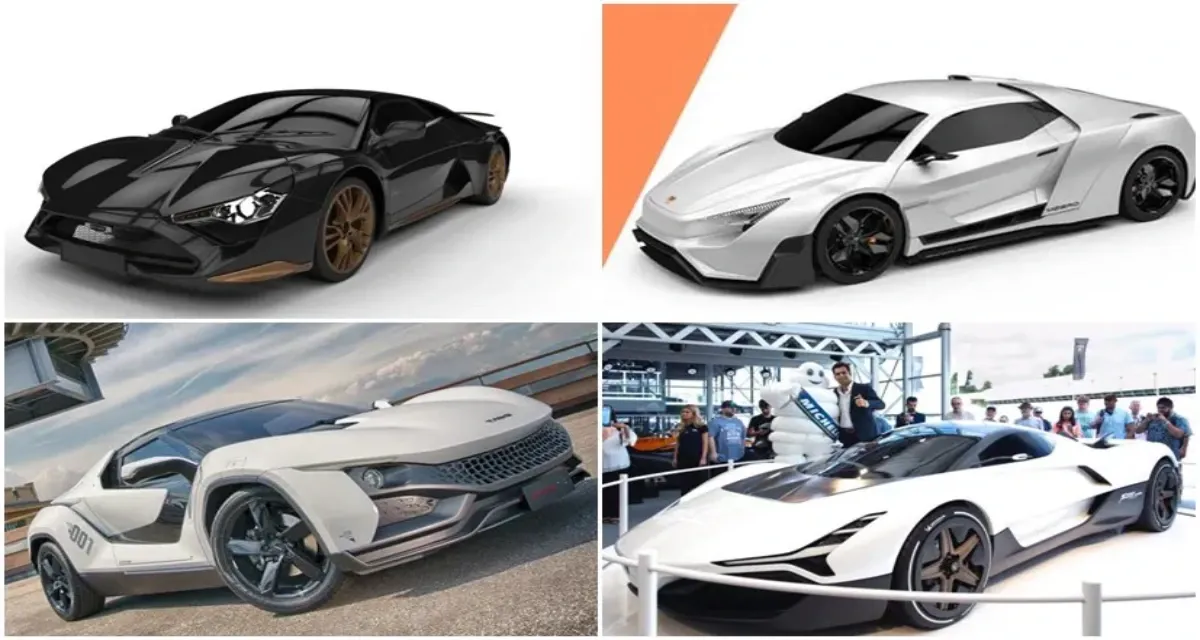

In recent years, the Indian automotive industry has witnessed a surge of interest in sports cars and hypercars from domestic manufacturers. Companies like Tata Motors, DC Designs, Motormind, and Vazirani Automotive have all ventured into this niche market, aiming to capture the imagination of Indian consumers with their innovative designs and powerful performances. However, the journey from concept to reality has been fraught with challenges, leaving many eagerly anticipated models still on the drawing board or cancelled altogether.
DC Avanti made headlines in 2015 as India's first homegrown sports car, boasting a rear-wheel-drive layout, a rear-mounted engine, and a lightweight carbon composite body. Powered by a 2.0-litre turbo petrol engine sourced from Renault, it promised a thrilling driving experience with 250 bhp under the hood. Despite its initial promise and a planned upgrade to the Avanti TCA variant with 310 bhp, the project faced setbacks. The Avanti failed to meet stringent crash test norms set by MoRTH, leading to its discontinuation. Allegations surrounding Dilip Chhabria's involvement in financial irregularities further marred DC Designs' prospects in the country.
Motormind, based in Bangalore, showcased the Hyperion1 at the 2016 Auto Expo, aiming to blend the agility of an Ariel Atom with the style of a KTM X-Bow. This open-roof sports car featured a 2.7-litre V6 engine from Hyundai Sonata, delivering 170 bhp to the rear wheels. With a lightweight construction using FRP composites and carbon fiber elements, the Hyperion1 boasted Lamborghini-style scissor doors and aimed to start production with a modest capacity of 15-20 cars per year. However, despite its futuristic appeal, there have been no updates on its production status since its unveiling.
TAMO Racemo, unveiled at the 2017 Geneva International Motor Show, was Tata Motors' ambitious foray into the sports car segment under its sub-brand, TAMO. Designed in Turin, Italy, the Racemo was set to feature a turbocharged 1.2 L Revotron engine generating 186 bhp and 210 Nm torque, paired with a 6-speed AMT transmission. Intended as a sub-4-meter 2-seater, the Racemo emphasized crash protection and ground clearance. Despite its promising debut, Tata Motors cited high R&D costs as the reason for shelving the project, disappointing enthusiasts eagerly awaiting its launch.
Vazirani Automotive, founded by Chunky Vazirani, made waves with its Shul hypercar concept showcased at the 2018 Goodwood Festival of Speed. Designed with aerodynamics inspired by wind tunnel tests, the Shul was envisioned as an electric hypercar with four motors offering independent torque vectoring. Promising over 1000 bhp and a carbon fiber monocoque chassis, it aimed to redefine performance benchmarks. However, delays in production and updates have left its market entry uncertain, despite early optimism surrounding its technological prowess.
Mean Metal Motors introduced the M-Zero, India's first electric supercar, in 2016, highlighting its capability with 500 hp, a range of 300 km, and a blistering 0-100 kmph sprint in 3 seconds. Collaborating across continents, the company aimed to set new standards in electric vehicle performance. However, like other ambitious projects, the M-Zero's launch remains unconfirmed amid industry challenges.
Supernova EV, showcased by Golden Arrow Wireless Pvt. Ltd. at the 2014 Auto Expo, promised an electric sports car with multiple battery options and impressive performance metrics. Despite signing agreements with state governments for manufacturing facilities, regulatory hurdles and market readiness have stalled its commercial debut.
The saga of Indian sports cars and hypercars reflects both the ambition and the challenges faced by domestic manufacturers. While concepts like the DC Avanti and TAMO Racemo showcased India's potential in automotive design and innovation, regulatory hurdles, high costs, and market dynamics have hampered their progress. Moving forward, stakeholders hope for a conducive regulatory environment and sustained investment in R&D to bring these dreams to fruition, offering Indian consumers world-class performance and cutting-edge technology in locally manufactured sports cars.
As enthusiasts eagerly await updates from manufacturers, the future holds promise for Indian sports cars to carve a niche in the global automotive landscape, provided they can navigate the complex terrain of production, regulations, and market demands effectively.
Also Read: